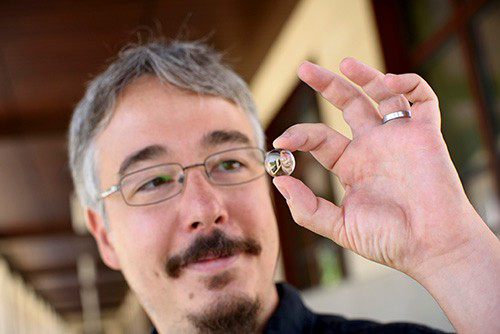Drones, autonomous cars and other complex robots need a new set of eyes to help them see the world like we do. This new camera might do the trick.
As the number and types of jobs robots can do grows, it’s possible that soon more cameras will be made for robots than humans. But for these bots, which will need to work autonomously and collaboratively, standard, run-of-the-mill cameras just won’t cut it.
That’s why Sydney-based mechatronic engineer Dr Donald Dansereau, along with a team of US researchers, has developed a world-first four-dimensional (4D) camera with the potential to revolutionise how robots see the world.
Currently, robots need to move around their environment and use images taken from different perspectives to understand properties such as 3D motion, depth and texture, transparency and reflective properties.

What makes this camera unique is it has a wide field of view, allowing a single lens to capture angles that would normally need to be captured by multiple cameras. The key technology that makes this impressive field of view possible is the concentric glass spheres in its monocentric lens.
“These lenses could have a 360-degree field of view if we didn’t need to install sensors to capture the light,” Dansereau said.
Dansereau’s device creates a 4D image using light field photography, which includes two-dimensional (2D) image information as well as the direction and distance at which the light enters the camera’s lens.
Light field imaging will make it easier for robots to perform tasks in environments where three-dimensional (3D) motion might cause difficulties in perception.
“I believe light field cameras and other computational imaging technologies will allow us to tailor cameras to specific robotics applications, allowing greater levels of autonomy and reliability even in challenging conditions,” he explained.

Robots operating in environments that require close-up interaction in complex settings, with limited time and power, stand to benefit the most from this innovation. Potential applications include drone landing, autonomous cars and robots designed to deliver goods. This camera could also make it easier for robots to work collaboratively with people in the workforce of the future.
Dansereau’s interest in robotic vision began during his doctoral research at University of Sydney, where he constructed a software toolbox that solved the practical problems of working with light fields in 4D cameras. This software was implemented in the open-source Light Field Toolbox for Matlab, and formed the basis for the code behind the latest iteration of the 4D camera.
Dansereau is currently a postdoctoral scholar at the Stanford University Computational Imaging Lab, and also a research affiliate of the Australian Centre for Robotic Vision, which is currently working on Australia’s first Robotic and Computer Vision Roadmap.







